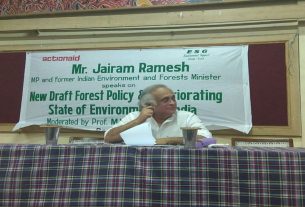Surveys and experts doubt Bhagyalakshmi can achieve its objectives, and have also exposed the malpractices behind implementation of the scheme.
A 2020 report by The Karnataka Evaluation Authority (KEA) observed that 76.7 percent of the families want to withdraw the Bhagyalakshmi scheme fund for marriage purposes. Experts say this is because the scheme does not offer positive incentivisation of education. Another report by the United Nations Population Fund (UNFPA) also highlighted malpractices in the implementation of the scheme by beneficiaries as well as officials. The first-batch beneficiaries are due to receive their funds in 2024.
Pavitra (name changed), mother of a 2006 beneficiary (first batch) said, “It is difficult to not think of marrying my daughter with the fund we will get. It’s a lot of money and marriage is important.” Furthermore, she commented on the rigorous process of the scheme registration, “Our entire family had to follow many criteria and registration was not that easy. After all that, we would like to spend the money for a family occasion.”

Eligibility criteria set by the Women and Child Development Department for availing the scheme.
However, a 2010 report by the UNFPA observed that many beneficiaries ignored the large number of criteria. The report stated that 25 percent parents did not undergo the mandated sterilization, three percent were from above-poverty-line families, and three percent did not produce the necessary documents. The study also found that anganwadi workers demanded bribes to register children, and that two percent registered children did not attend anganwadi for the mandated years.
Dr. Sudeshna Mukherjee, professor of Women Studies at the Bangalore University is also the principal investigator for the KEA report. She commented that the family planning or the mandatory sterilization after having two daughters in the family being a criterion for availing the scheme saw protests across villages. “Do they ask for sterilization for BPL cards, ration cards, caste certificates? No. Asking for sterilization for this scheme is attaching contradictory clauses to it.” She added that the scheme blatantly displayed patriarchy.
The Karnataka Ministry of Women and Child Development launched the Bhagyalakshmi scheme for girl children in below-poverty-line (BPL) families in 2006. The scheme declares that up to two girl children born in BPL families are entitled to a sum of money from the government of Karnataka. Initially, the scheme mandated only 8th standard education, but it was later revised to 10th standard. The 2008 modifications noted Rs. 19,300 will be deposited for the first child, and Rs. 18,350 for the second child. On maturing, the first child will receive Rs. 1,00,097, and the second child will get Rs. 1,00,052. The children can avail the entire sum at 21 years of age, and Rs. 50,000 at 18 years for higher education (should they want). The Bhagyalakshmi scheme has been merged with the Sukanya Samriddhi Yojana.
Dr. Mukherjee said, “The Bhagyalakshmi has a lot of objectives—eliminating child marriage, female foeticide, child labour, improving women’s status. These are very complex problems. One scheme with so many criteria is not enough.” She added that from her experience in the field, mistreatment of the girl child is across economic lines so the BPL family criteria does not address the problems at large. Dr. Mukherjee further said that the number of criteria attached to the scheme makes it unappealing to families. “The KEA report noted that only 12.5 percent of the second girl child in BPL families were registered with the scheme.”
An official from the Directorate of the Women and Child Development (WCD) Department who specializes in the Bhagyalakshmi scheme said, “It was the perception of people that because young girls were getting a lump sum of money at the then legally marriageable age of 18, it would be used for marriages and hardly anything else.”
The WCD department official confirmed that the age a beneficiary can withdraw the full Bhagyalakshmi amount was increased to 21 years in 2020 to further encourage parents to send their daughters for higher education. However, the legal age for a woman to marry in India was also increased to 21 in 2022. She added that a portion of the Bhagyalakshmi scheme money is now kept for the children’s education which is paid directly to the institutes, and not the beneficiaries. “Many families are starting to take education very seriously. Most of the girls are studying.”
However, the 2019 KEA report states that the Bhagyalakshmi scheme has not been successful in implementing a curb on child marriage. It observes that only 2.4 percent of anganwadi workers believe that the scheme has helped in reducing the number of child marriages in their districts.

Dr. Mukherjee commented that the scheme lacks positive incentivisation towards education and therefore does not encourage it. “In this way, the Kanyashree Prakalpa for West Bengal is better. It does not only delay marriage but also incentivizes education. If the Bhagyalakshmi could offer incentives for education specifically – Rs. 20,000 extra for completing 12th Boards, for example- it would have had more chances of achieving its objectives.”
In 2006, the Prohibition of Child Marriage Act criminalized marriage of underage girls. However, National Crime Records Bureau data shows that 2021 saw a 34 percent increase in child marriages in India. Moreover, Karnataka topped the list in 2020 with a 66 percent increase in cases from 2019.





Quite informative
Amazing work
Great reporting on a very relevant topic. Looking forward to more such insights.